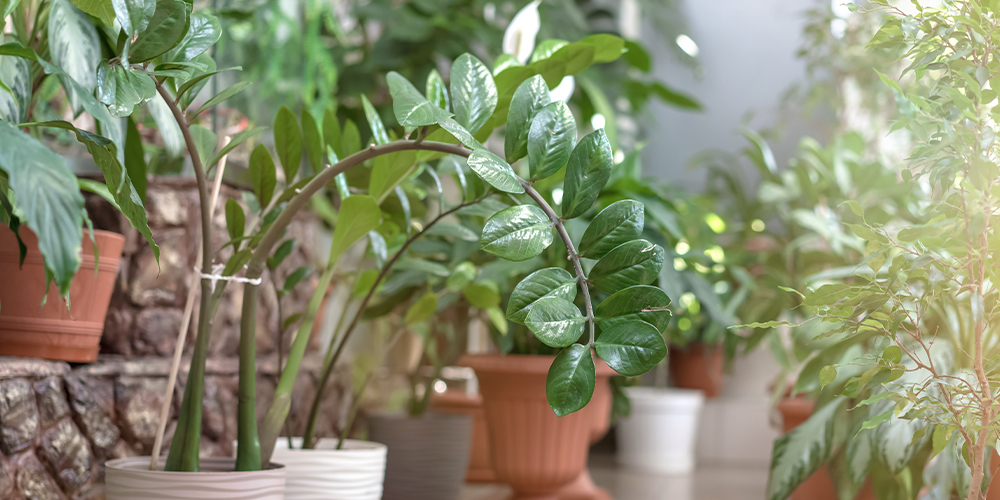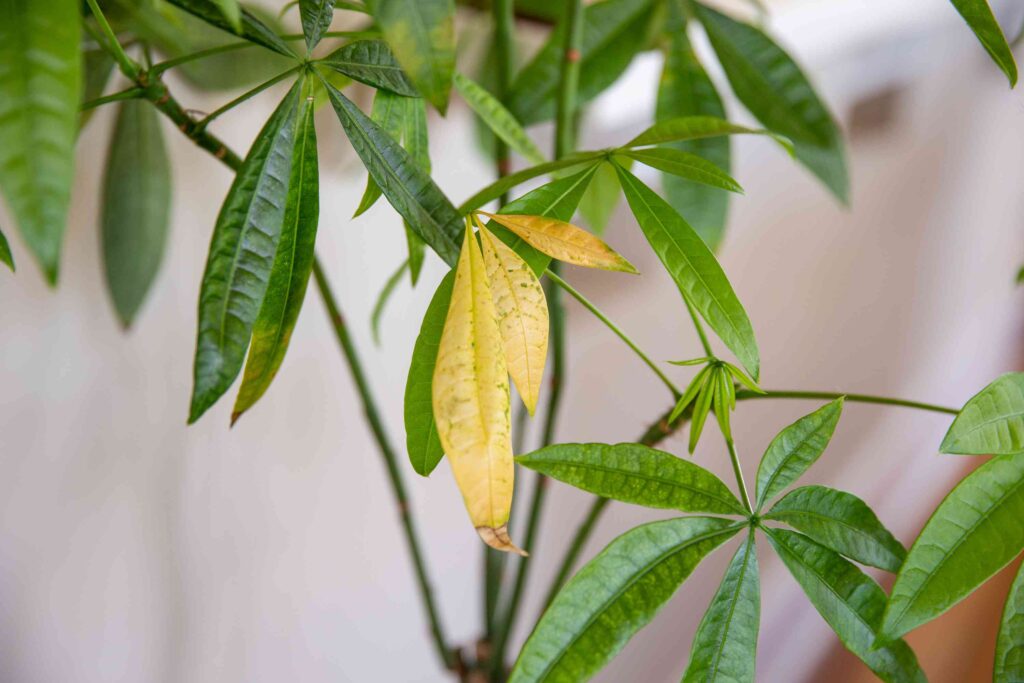Contents
Introduction
If you’ve ever tried your hand at indoor gardening, you know that keeping your plants healthy can be a bit of a juggling act. The changing seasons can throw a wrench into your carefully planned plant care routine, leading to all sorts of issues like wilting leaves, pest problems, or stunted growth. But don’t worry—avoiding these common seasonal mistakes is easier than you might think!
Plants are just like us—they have different needs depending on the time of year. Imagine trying to keep a summer wardrobe in tip-top shape during a blizzard. That’s what it’s like for plants when their seasonal needs aren’t met. Whether it’s a lush fern, a vibrant peace lily, or a hardy snake plant, each one has its own set of seasonal preferences that can make or break its health.
In this guide, we’re diving into how to keep your indoor plants thriving all year round. We’ll break down the essential tips for each season, so you can avoid the pitfalls that often catch plant lovers off guard. From adjusting watering schedules to tweaking light exposure, we’ve got you covered with straightforward advice that doesn’t require a green thumb to understand.
So, if you’ve ever found yourself scratching your head wondering why your plant isn’t doing so great, or if you’re just looking to improve your plant care game, stick around. We’ll help you make seasonal transitions smooth and keep your indoor garden looking fabulous no matter what the weather’s doing outside!
Spring Care: Preparing Plants for Growth
Spring is like a fresh start for your indoor plants, much like it is for us. After a long winter, plants are ready to shake off the chill and kick into high gear. This season is all about growth and renewal, which means your plants will need a little extra TLC to thrive.

Increasing Watering and Feeding
As the days get longer and warmer, your plants will start to wake up from their winter slumber and enter their busy growing phase. This means they’ll need more water and nutrients to support their new growth. Think of it like giving them a little boost after their winter break. Start by gradually increasing how often you water them—just be careful not to overdo it. Also, it’s a good idea to start feeding them with a balanced fertilizer to provide the extra nutrients they need.
Repotting and Pruning
Spring is the perfect time to check if your plants have outgrown their pots. If you notice roots poking out of the bottom or if the plant looks crowded, it’s time to repot. Moving them to a larger pot gives them more space to grow and helps prevent root-bound issues. This season is also great for pruning. Snipping off dead or overgrown stems will encourage your plants to grow fuller and healthier, and it’ll make them look their best.
Adjusting Light Exposure
As the sun shines brighter and the days get longer, your plants will need more light to stay healthy. Move them closer to a window where they can soak up those rays, but be mindful of too much direct sunlight, which can scorch their leaves. Rotate your plants occasionally to ensure all sides get even light exposure, promoting balanced growth.
Pest Control and Prevention
Spring can bring out pests like aphids, spider mites, and gnats, which love to feast on fresh new growth. Keep an eye out for any tiny invaders and act quickly to get rid of them. Regularly check the leaves and soil, and use natural pest control methods or gentle insecticides if needed. A little prevention goes a long way in keeping your plants pest-free and happy.

By tuning into these springtime tips, you’ll help your indoor plants wake up refreshed and ready to grow, setting the stage for a vibrant and thriving year ahead.
Summer Care: Managing Heat and Sunlight
Summer can be a tough season for indoor plants. With longer days and higher temperatures, plants face challenges that can stress them out if not managed properly. Luckily, a few simple adjustments can help your plants stay happy and healthy through the hottest months of the year.
Managing Increased Light and Heat
During summer, the sun is stronger and the days are longer, which can be both a blessing and a curse for your indoor plants. Too much direct sunlight can lead to leaf burn and dehydration. To keep your plants safe, try moving them to a spot where they get bright, indirect light rather than harsh direct rays. You can also use sheer curtains or blinds to diffuse the sunlight. Make sure to keep an eye on them for any signs of sunburn, like crispy or discolored leaves, and adjust their location if needed.
Maintaining Humidity Levels
Summer’s heat can dry out the air, which isn’t great for plants that thrive in more humid conditions. To keep humidity levels up, try misting your plants regularly with water or placing a shallow dish of water near them to evaporate. If you have a humidifier, this is a great time to use it. Plants like ferns and orchids particularly appreciate the extra moisture in the air, so a little extra humidity can make a big difference.
Watering Wisely
With the increase in temperature, your plants might need more water, but it’s easy to go overboard. To avoid overwatering, check the soil moisture regularly—stick your finger about an inch into the soil. If it feels dry, it’s time to water; if it’s still moist, wait a bit longer. Be careful not to let the plant sit in standing water, as this can lead to root rot.
Handling Rapid Growth
Summer is a growth spurt time for many plants, so you might notice they’re growing faster than usual. Make sure to support taller plants with stakes or supports if needed to keep them upright. You might also need to prune back any overgrown or unruly stems to keep your plant looking its best and prevent it from becoming too leggy.
By staying on top of these summer care tips, you’ll help your indoor plants navigate the heat and sunlight of the season with ease. A little attention to their needs now will keep them lush and vibrant throughout the summer and beyond.
Autumn Care: Preparing for Dormancy
As summer fades and autumn rolls in, your indoor plants start preparing for a quieter period of the year. This season is all about easing into dormancy, where plants slow down their growth and conserve energy. With a few adjustments, you can help your plants transition smoothly and keep them in great shape.
Gradual Reduction in Watering and Feeding
As the days get shorter and cooler, your plants will naturally start to slow down. This means they’ll need less water and fewer nutrients. Begin by cutting back on watering—let the top inch of soil dry out before giving your plants a drink. Also, reduce the frequency of feeding; most plants won’t need as much fertilizer during this time. Overwatering or overfeeding can lead to root problems, so it’s important to adjust your routine gradually.
Cleaning and Pruning
Autumn is a great time to give your plants a bit of a makeover. Remove any dead or yellowing leaves, and do a bit of pruning to help your plants focus their energy on healthy growth. Cleaning the leaves helps them absorb more light and prevents any potential pest problems. Check for any signs of pests or diseases and address them before your plants go into dormancy.
Adjusting Light and Temperature
With the change in season, your plants might need a little adjustment in their light exposure. Move them to a spot where they still get ample light, but be mindful that the angle of sunlight changes. This could mean moving them closer to a window or using a grow light if natural light is insufficient. Also, keep plants away from cold drafts and sudden temperature changes, which can stress them out. A consistent, moderate temperature is ideal.
Managing Humidity as Indoor Heating Begins
As you turn on your heating for the cooler months, indoor air can become dry, which isn’t great for plants that prefer a bit of humidity. To combat this, you can use a humidifier, or place trays of water near your plants to add moisture to the air. Regular misting can also help, but avoid misting too frequently as this can sometimes lead to fungal issues.
By following these autumn care tips, you’ll help your indoor plants gracefully transition into their dormant phase, ensuring they remain healthy and vibrant as they prepare for the quieter months ahead. With a little preparation, your plants will be well-equipped to weather the seasonal shift and come back strong in the spring.
Winter Care: Nurturing Dormant Plants
Winter is a season of rest and recuperation for indoor plants. With shorter days, lower light levels, and cooler temperatures, your plants enter a period of dormancy, where their growth slows down and their needs change. To keep them healthy and ready for the spring burst, you’ll need to make a few key adjustments in your care routine.
Understanding Dormancy
Just like many animals hibernate during winter, plants enter a state of dormancy to conserve energy. This means their metabolic processes slow down, and they require less water and nutrients. It’s important to understand this seasonal slowdown to avoid overwatering or overfeeding, which can harm your plants. Think of it as giving your plants a well-deserved break before their busy growing season starts again.

Optimizing Light Exposure
Winter days are shorter and less bright, which can affect your plants’ light intake. To help them through this, reposition them to take advantage of whatever natural light is available. If sunlight is still scarce, consider using grow lights to supplement their light needs. This can help prevent issues like leggy growth or weak stems. Keep an eye out for signs of insufficient light, such as elongated stems or pale leaves, and adjust their light exposure accordingly.
Managing Temperature and Humidity
Indoor heating can make the air very dry, which isn’t ideal for most plants. To keep humidity levels up, use a humidifier or place a few shallow trays of water around your plants. Regular misting can also help, but be cautious of overdoing it to avoid mold issues. Additionally, ensure your plants are away from cold drafts and sudden temperature changes, which can stress them out. Maintaining a consistent, moderate temperature is crucial for their well-being during the winter months.
Minimal Watering and Fertilizing
With your plants in dormancy, their water and nutrient needs are greatly reduced. Water less frequently, allowing the soil to dry out more between waterings. Avoid fertilizing during this period, as the plants won’t be actively growing and won’t need the extra nutrients. Check the soil moisture regularly and only water when necessary. Overwatering can lead to root rot and other issues, so err on the side of caution.
By adjusting your plant care routine to accommodate their winter dormancy, you’ll help them stay healthy and poised for a vibrant resurgence come spring. With a little attention and preparation, your indoor garden will make it through the winter months in top shape, ready to flourish as the seasons change.
Troubleshooting Common Issues Across Seasons
Even with the best care, indoor plants can sometimes encounter problems. Understanding and addressing these issues promptly can help keep your plants healthy year-round. Here’s how to troubleshoot some of the most common issues that can arise across different seasons.
Yellowing or Dropping Leaves
Yellowing leaves or leaf drop can be a sign of several issues. It might be caused by overwatering, which leads to root rot, or by underwatering, where the plant is too dry. It could also be a sign of insufficient light or a nutrient deficiency. To troubleshoot, check the soil moisture and adjust your watering routine accordingly. If the problem is related to light, try moving your plant to a brighter spot. For nutrient deficiencies, a balanced fertilizer can help, but be careful not to overfeed. Regularly inspect your plant and address any issues as they arise to keep it healthy.

Pest Infestations
Pests like aphids, spider mites, and mealybugs can be a nuisance for indoor plants, and they can crop up at any time of the year. To prevent infestations, keep your plants clean and check them regularly for signs of pests. If you spot any, address them immediately with natural remedies like neem oil or insecticidal soap. Regularly cleaning leaves and using pest deterrents can also help keep these unwanted visitors at bay.
Root Rot and Other Watering-Related Issues
Root rot is a common issue, especially if plants are overwatered or if the soil doesn’t drain well. Symptoms include soggy soil, a musty smell, and wilting leaves despite wet soil. To combat root rot, ensure your pots have good drainage and avoid letting your plants sit in standing water. Allow the top inch of soil to dry out before watering again. If you suspect root rot, you may need to repot the plant, removing any affected roots and improving soil drainage.
Leggy Growth and Poor Development
Leggy growth, where plants become tall and spindly with long spaces between leaves, often indicates insufficient light. When plants don’t get enough light, they stretch out to reach more, leading to weak and elongated stems. To fix this, move your plant closer to a light source or use grow lights if natural light is insufficient. Pruning back leggy growth can also encourage your plant to produce denser, healthier foliage. Ensure your plant is receiving the right amount of light for its specific needs, and adjust its placement accordingly.
By being proactive and attentive to these common issues, you can keep your indoor plants in great shape throughout the year. Troubleshooting problems early and making the necessary adjustments will help ensure that your plants continue to thrive, no matter what the seasons bring.
Conclusion
Taking care of indoor plants through the changing seasons can be a rewarding experience, but it does require a bit of attention and adjustment. Each season brings its own set of challenges and opportunities for your plants, and understanding how to adapt your care routine is key to keeping them healthy and vibrant year-round.
Recap of Seasonal Care Essentials
As we’ve explored, spring is a time for growth and rejuvenation, requiring increased watering, feeding, and repotting. Summer demands careful management of light and heat, along with maintaining humidity levels. Autumn is about preparing plants for dormancy by reducing watering and feeding, cleaning, and adjusting light. Winter calls for minimal watering and fertilizing, managing humidity, and optimizing light exposure to support your plants through their resting phase.
Encouragement for Seasonal Plant Care
By tuning into the specific needs of your plants each season, you can help them navigate the year’s changes with ease. Regular observation and a little seasonal adjustment can make a big difference. Remember, healthy plants are not only beautiful but also a source of joy and relaxation. So, embrace the seasonal shifts and use them as an opportunity to connect with your plants in a deeper way.
Final Tips for Plant Lovers
To further enhance your plant care, consider creating a seasonal care schedule or using reminders to stay on top of each plant’s needs. Joining plant care communities or forums can provide additional support, tips, and a sense of camaraderie with fellow plant enthusiasts. And don’t forget, patience and a bit of experimentation are part of the process. With time, you’ll become adept at keeping your indoor garden thriving no matter what the weather’s doing outside.
So go ahead—apply these tips, enjoy the process, and watch your indoor plants flourish throughout every season.



